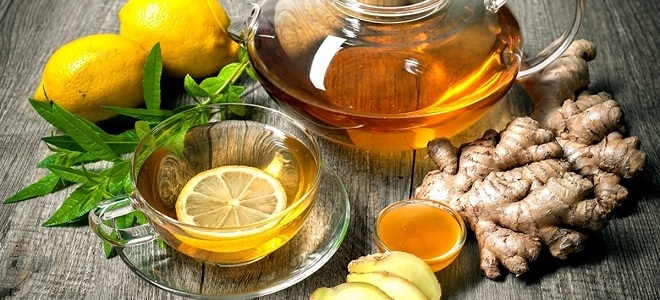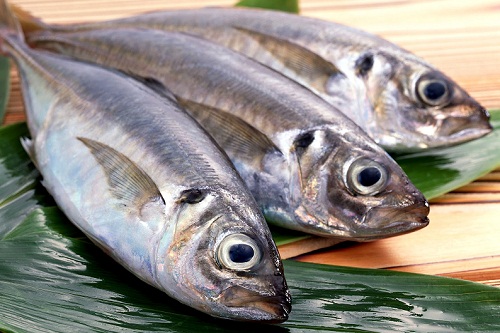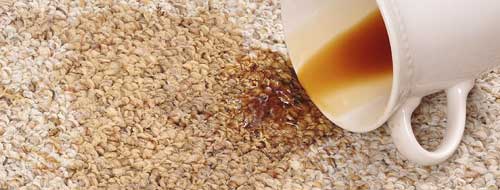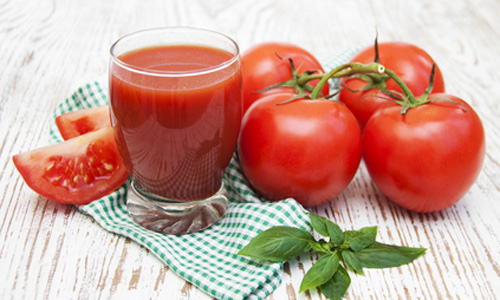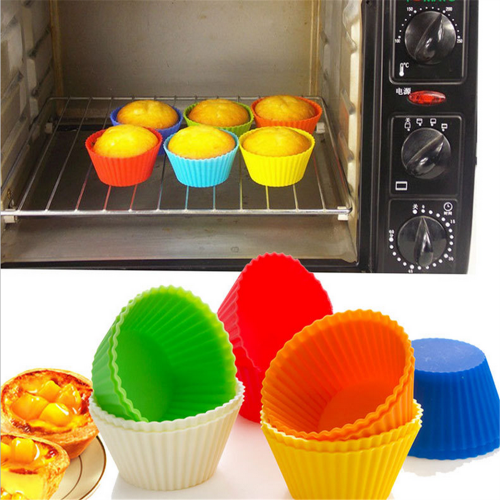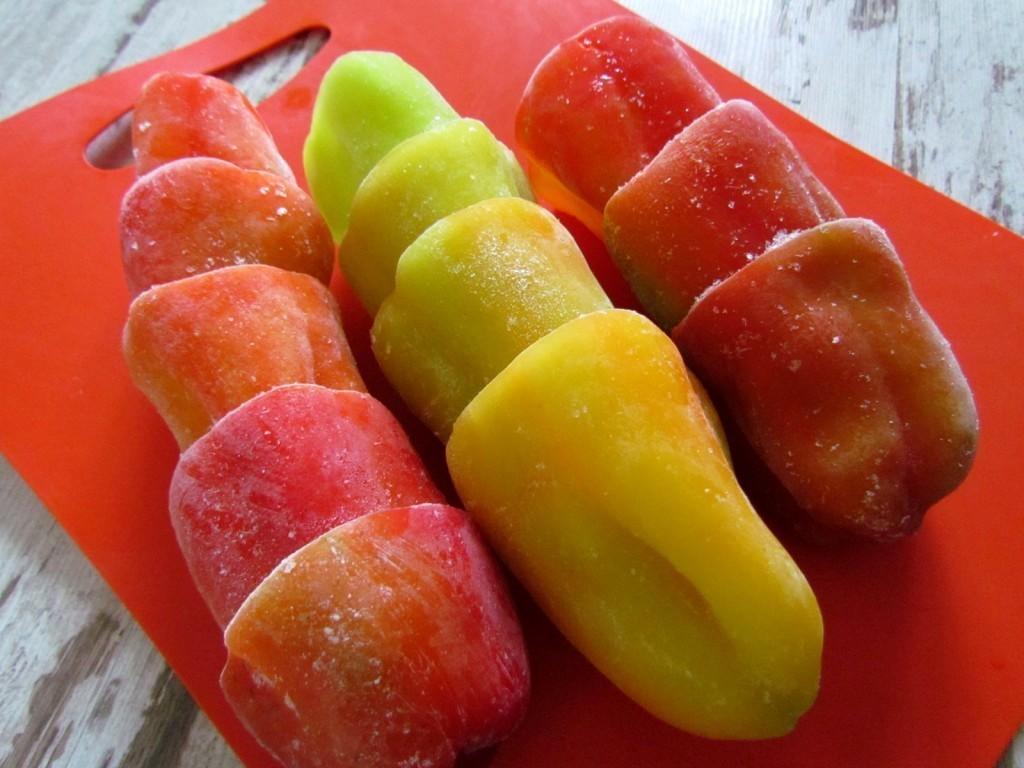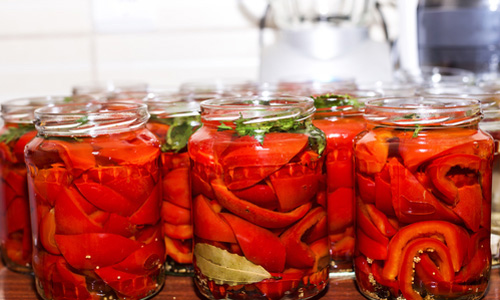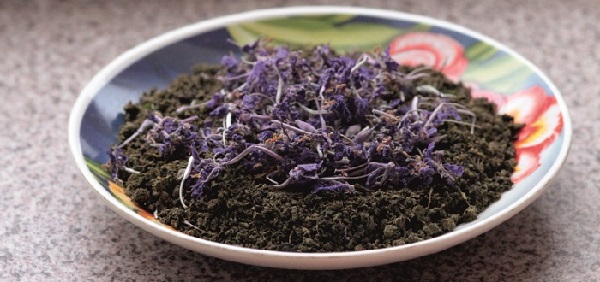Play the game chef from France. Joel Robuchon - one of the best chefs in the world
French chef and restaurateur Joel Robuchon.
Joel Robuchon was born on April 7, 1945 in Poitiers in western France in a mason's family. Received professional education in cooking courses.
At age 15, he became a chef apprentice in the kitchen of the Relais Poitiers hotel in Poitiers. Then he worked as a sous-chef in various restaurants in France.
In 1974, he became the chef of the restaurant at the Concorde Lafayette hotel in Paris, where 90 chefs worked under his leadership, and in 1978, the chef at Les Celebrites at the Nikko hotel in Paris.
In 1981, Robuchon opened his first restaurant in the French capital, Jamin. In 1984, he became the youngest chef to receive the highest rating in the world of gastronomy - three stars of the Michelin guide (prestigious culinary awards awarded by this restaurant guide).
In 1989, he began working with the Japanese group of companies Sapporo and in the same year opened the Chateau Tailleve-Robuchon restaurant in Tokyo.
In 1990, the famous French restaurant guide Gault Millau named Robuchon the "Chef of the Century."
Joel Robuchon loved traveling and often visited Japan and Spain. In these countries, sushi bars and tapas bars, in which live communication takes place, inspired him to experiment. Robuchon developed an original restaurant concept - L’Atelier de Joel Robuchon, in which the entire cooking process takes place in front of guests. He opened the first such restaurants in 2003 in Paris and Tokyo. Later they appeared in different cities of the world - in Macau (2001), Monaco (2004), Las Vegas (2005), New York (2006), London (2006), Hong Kong (2006), Taipei (2009), Singapore ( 2011), Montreal (2016).
In 1995, Robuchon quit his job as a chef to focus on promoting his knowledge and skills. In 1996, he, along with producer Guy Job, launched the culinary show Cuisinez comme un grand chef ("Cook Like a Chef") on TF1. In 2000-2009, it was aired on France 3 under the name Bon Appetit Bien Sur. Each week, one of the chefs was invited to the program, and together they demonstrated how to cook according to one or another recipe, gave advice and showed techniques that made haute cuisine more accessible. Since September 2011, Robuchon has hosted the new Planete Gourmande television show, in which he shared his recommendations and interesting recipes. In 2002, Robuchon opened the French satellite channel Gourmet TV.
Joel Robuchon has published several culinary books, including Simply French (1991), Best of Robuchon (2009), La cuisine de Robuchon par Sophie (2011), Food and life, le gout de la vie (2014), and he was author of weekly cooking columns for the newspaper Le Figaro and Sunday magazine.
Joel Robuchon was awarded many awards, including the National Prize and the gold medal of the French Academy of Culinary Arts (1972), the title of "Best Worker in France in the Field of Culinary Arts" (1976), the Order of the Legion of Honor (officer, 2003). Since 1998, he was on the council of the Order of Merit in the Field of Agriculture, and was also a member of the French Academy of Culinary Arts.
Robuchon-led restaurants received a total of 32 Michelin stars - more than other chefs in the world.
April 29, 2017 No comments
The recipes of French chefs are both sophisticated and simple, chic and economical, sophisticated and consistent. French cuisine certainly influenced the formation of all modern culinary, both European and other countries of the world. It is difficult to imagine a restaurant menu without French first courses and appetizers, salads and sauces, French pastries and baguettes, stews, cheeses, and desserts. French chefs take pride in a variety of meat terrines and baked pastes, which can be used to economically and successfully replace sausages or ham.
French cuisine originated as a provincial cuisine, dictated by local ingredients and products, it is connected with the traditions of individual corners and regions of France. French chefs are genuine fans of their craft, who want to bring all the dishes to perfection, and are very enthusiastic about their craft. Even ordinary people in France are often well versed in the details of exquisite dishes. In the capital of France in the 17th century. the first restaurant appeared, which served as the beginning of the formation of French cuisine.
French chefs know more than 3 thousand different sauces. A variety of sauces occurs due to the use of various spices and spices, traditionally recipes include tarragon, marjoram, rosemary, thyme, parsley, Provencal herbs and many others. French cuisine is famous for its cheeses, their number exceeds more than two hundred kinds. Chefs in France actively use vegetables in recipes, the most in demand are artichokes, lettuce, cabbage, asparagus, tomatoes, onions and garlic. The famous vegetable dish of French chefs is ratatouille.
French cuisine has invented many recipes for delicious dishes, pastries and wonderful desserts. In this material, chefs from French cuisine share classic recipes that are the simplest and most affordable, which will allow you to cook them at home.
Onion soup belongs to the classic French soups. The story of his appearance is as follows - it was first prepared by the King of France Louis XV. One night he wanted to eat, but of the products that were in his hunting lodge there were only onions, butter and champagne. He mixed all the ingredients, and thus the onion soup was created.
Currently, onion soup is prepared on the basis of meat, chicken or vegetable broths. To make the aroma of the soup more vivid, it is necessary to pass onion for a long time. In order to give an original taste, the French chefs add white table wine or sherry to the onion soup, after which they insist. Also, cheese and croutons are used as ingredients of onion soup.
200 g onions
a pinch of salt
15 g sugar
20 g butter
20 ml of vegetable oil
40 ml red wine
120 g chicken stock
30 g beef demiglass
10 g sauce Worcester
30 g flour
20 g cheese
60 g duck fillet
spinach leaves
bread baguette
Chop onions into small strips and fry over low heat for about 40 minutes. in vegetable oil, adding butter and 15 g of sugar, then pour the wine and evaporate, add chicken stock, 10 g of Worcester sauce and 30 g of fried flour, mix thoroughly. Cook until cooked for 35-40 minutes. over low heat, then add the finely chopped garlic, let it brew.
Wash the duck fillet, fry in vegetable oil, bring in the oven until fully cooked. Cut the baguette, sprinkle with grated cheese and bake until golden brown. Warm up the soup, add duck fillet, and add salt and black pepper to taste. Pour the soup into portioned dishes, put cheese croutons on top, decorate with small leaves of spinach.

200 g chicken
1 onion
salt
olive oil - 1 tablespoon
hard cheese - 40 g
champignons - 40 g
Wash, dry the chicken fillet, put it on a cutting board, wrap it with cling film and beat it off with a kitchen hammer. Remove the film, grease the fillet on both sides with oil, cover with cling film again and leave for about 20 minutes. Heat a dry skillet. Fry the fillet in a whole piece for 5 minutes on each side. Remove from heat.
Peel the onion, chop finely. Wash the champignons, put them on a paper towel for draining water; then cut into small pieces. Fold onions with mushrooms in a saucepan, put on moderate heat and cook, stirring occasionally to evaporate all the moisture that was released by the mushrooms.
After the chicken has cooled, cut it, put it in the coconut bowl.
Make a creamy sauce. Add mushrooms, onions and nutmeg to it. Salt, pepper to taste and mix. Preheat the oven to 200 degrees. Grate cheese on a medium grater. Pour the sauce into the cocotte with chicken and sprinkle with grated cheese on top. Put in the oven and bake until the crust forms, about 4 minutes.

Rabbit meat - 1.5 kg
fatty pork - 300 g
bacon - 8 strips
carrots - 1 pc.
onions - 1 pc.
dry white wine - 0.5 l
cognac - 50 ml
chicken egg - 1 pc.
vegetable oil - 2 tbsp.
butter - 1 tbsp.
parsley - 1 bunch
thyme - 2 branches
bay leaf - 2 pcs.
ground nutmeg - a pinch
salt
pepper
Step 1
Wash the rabbit meat, cut the meat from the bones. Put the meat in a deep bowl, add dry wine, a little salt, pepper and a pinch of nutmeg. Stir, cover and refrigerate for 10 hours. Put the bones in a bag and place in the cold.
Step 2
Peel and chop the onion and carrot. Heat butter and vegetable oil in a saucepan, sauté the bones of the rabbit until brown, about 10 minutes. Add onions and carrots, cook for 5 minutes.
Step 3
Pour 50 g of cognac, rabbit marinade and 0.5 l of water into the stewpan. Bring to a boil, reduce heat and cook for 15 minutes. Strain the broth through a fine sieve. Pour 200 ml of decoction into a clean bowl, add chopped parsley and thyme leaves. Allow to cool.
Step 4
Set aside the meat from the legs of the rabbit. Pass the remaining meat, as well as pork through a meat grinder. Mix the minced meat with pre-prepared broth (200 ml) and chicken egg. Beat well.
Step 5
Cut the meat laid aside with a knife into medium slices. Mix with cooked minced meat.
Step 6
Line a wide baking dish out of strips of bacon. Lay out the resulting mass, put a couple of bay leaves on top of it. Cover and place on a baking sheet filled with water. Place in an oven preheated to 180 degrees for about 1.5 hours. Allow to cool in shape, then take out the terrine, cover and leave in a cool place for a whole day.

In this light salad, you can add both olive and other types of oils, such as pumpkin, almond or mustard oil.
1 clove of crushed garlic
½ head lettuce
80 ml white wine vinegar
salt
100 g canned artichokes
6 tbsp. l olive oil
20 pcs. olives
4 tomatoes
2 tbsp. l capers
4 chicken eggs
To make the sauce. Remove the yolks from two eggs. Peel and chop the garlic clove. Combine the yolks, garlic, wine vinegar with olive oil. Season with salt and pepper, set aside.
Rinse lettuce leaves, dry and pick in large pieces with your hands. Wash and slice the tomatoes. Combine tomatoes, canned artichokes, 20 olives and lettuce in a deep bowl. Mix well, season with sauce and arrange on plates. Cut the remaining chicken eggs into slices and decorate the salad with their help.

2 tbsp. l flour
2 large tomatoes
cream - 200 ml
hard grated cheese (e.g. Parmesan) - 3 tbsp. l
2 eggs
400 g cod fillet
frozen Brussels sprouts - 350 g
1 tbsp olive oil
Thaw Brussels sprouts, dip them into slightly salted boiling water for about 4 minutes, drop them onto a sieve and let dry. Dry the cod fillet with a paper towel, cut into small pieces, breaded in flour, salt and pepper.
Tomatoes cut into large cubes. Grease a large baking dish with oil, put cod fillet on it. Arrange small cabbage cabbage evenly between pieces of fish evenly, and also add slices of tomatoes. Preheat the oven to 190 degrees. Beat eggs with cream, add cheese, mix thoroughly, season a little with salt and pepper. Pour the resulting mixture of fish and vegetables, sprinkle with grated Parmesan and put in the oven. Bake for about 25 minutes. Drain excess water and bake for another 10 minutes at a temperature of 170 degrees.

4 tbsp. l olive oil
70 ml dry white wine
2 tbsp. l tomato paste
1 small onion
6 cloves of garlic
1 zucchini
1 bell pepper
2 eggplant
9-10 tomatoes
salt
parsley, basil
Finely chop the onion, fry for 3 minutes with garlic (pass a couple of cloves through the press). Cut bell pepper into small cubes, add to the onion, fry for about 4 minutes. Take 4 tomatoes, peel them, pass through a blender, add to the fried onion mixture and simmer over moderate heat for about 5 minutes.
Put tomato paste, a pinch of salt and spices. Bring to a boil and simmer under a closed lid over low heat for about five minutes. Put half of the prepared mixture in a baking dish. Two eggplant, zucchini and tomatoes cut into thin circles and put in a baking dish.
Parsley, basil chopped finely, sprinkle with vegetables, add three cloves of garlic, which were previously passed through a press, scatter a couple of branches of thyme, sprinkle with olive oil. Spread the remaining tomato mass. Bake the ratatouille in the oven for about one hour at 190 degrees.
Chef's advice
It is desirable to cover the baking dish from above with sheets of parchment.

250 g brie cheese
1 chicken egg
2 feathers of green onions
200 g ready puff pastry
250 g of cherry tomatoes
Wash the onion and cut into small rings. Wash and dry the cherry. Roll out the dough into a thin layer and cut out two circles from it, the diameter of which is about 23 cm. Moisten a baking sheet with cold water.
Put the dough on a baking sheet. Put a mug of cheese in the middle. Arrange the tomatoes on the sides, sprinkle with onions.
Cover with a second layer of dough. Moisten your hands and pinch the edges. Lubricate the dough with lightly beaten eggs. Bake in the oven at 200 degrees for 30 minutes. Remove, let cool for 5 minutes and serve. Enjoy your meal.

1 glass of light beer
1 tsp dried thyme
0.5 kg of veal minced meat
1 tsp ground sweet paprika
salt
2 onions
1 small red cabbage
hot red pepper
Disassemble the cabbage into leaves. Take a large pot and boil slightly salted water, put the cabbage leaves and cook for about 5 minutes. Fold in a colander, let cool, then cut into small squares.
Peel and chop the onion. Stir veal mince with onion, 1 tsp. thyme, 1 tsp paprika, hot pepper and add salt to taste.
Place the cabbage with minced meat in the baking dish. Shuffle. Pour in a glass of beer. Cover with parchment and cook in the oven preheated to 200 degrees for half an hour.

1 tbsp. l starch
2 onions
2 apples
1 kg pork ham
200 g sour cream
2 carrots
salt
pepper
2 bay leaves
80 ml of vegetable oil
leek stalk
400 ml apple juice
1 tbsp. l Dijon mustard
Wash the pork and cut into medium-sized pieces. Peel the onion and two carrots. Dice the onions and carrots into thin slices. Rinse the leek thoroughly and cut into slices about 3 cm long. Wash the apples and cut each into six parts, remove the core.
Fry the pork in a skillet in preheated vegetable oil, about three minutes on each side. Transfer with a slotted spoon to the pan.
Fry onions and leeks in the same frying pan for about 5 minutes. Add to the pan to the pork. Put two bay leaves in a pan, add carrots, pour apple juice. Bring to a boil over high heat. Reduce heat and simmer for half an hour under a tightly closed lid.
In a saucepan, mix 200 g of sour cream with 1 tbsp. l Dijon mustard and 1 tbsp. l starch, put on low heat and cook, stirring constantly for about 2 minutes.
Pour the resulting mixture into the pan. Salt and mix thoroughly. Add the apples and cook for another 6 minutes until the apples are softened and the sauce becomes thick.

This dish, as well as a large number of light and extremely delicious recipes, has gained worldwide fame, but it has not undergone any changes. Often fricassee is made of poultry meat, and a little less often - from rabbit or veal.
Turkey Breast - 1/2 kg
green beans - 200 g
dried mushrooms - 50 g
butter - 1 tbsp. l
sour cream - 100 g
egg yolk
salt
ground black pepper
Pour mushrooms with 1.5 cups of boiling water and close the lid. Cook until soft, about 10 minutes.
At this time, cut the turkey breast fillet into small pieces, put in a pan with boiling water, put on a large fire and bring to a boil. Remove foam, salt and boil for about five minutes.
While the fillet is cooked, boil green beans in boiling slightly salted water for about 2 minutes. Fold in a colander and pour over cold water.
Remove the turkey from the broth, let cool slightly.
Bring the broth to a boil. Reduce heat, add sour cream, turkey fillet, as well as mushrooms and beans. Add salt and pepper to taste. Stir and cook for about 5 minutes. Add egg yolk, mix and remove from heat.
Chef tip:
There is a Khajun variation of the dish - lobster fricassee. It differs in that instead of beans and mushrooms, sweet pepper, cloves of garlic and celery are added to the dish.

Basil - 3 branches
classic tapenade - 100 g
2 tomatoes
2 average dorado
breadcrumbs
Cut the tomatoes crosswise, blanch in boiling water for about 30 seconds, pour over with cold water. Peel and sunflower seeds, cut the flesh with long bars. Season with salt and pepper.
Clean, gut the fish, rinse thoroughly inside, dry. Coat one side with olive oil and cover the other with tapenade mixed with breadcrumbs.
Place the oiled side on a baking sheet. Then put tomato slices on the fish. Bake in the oven, preheated to 200 degrees, for about 20 minutes. Garnish with basil before serving.

For biscuit:
6 large eggs
1 tsp baking powder
1 cup flour
salt
50 g butter
50 ml of milk
200 g sugar
For fondue:
dark chocolate -500 g
2 tbsp powdered sugar
200 ml cream
50 g butter
Fruits:
strawberries - 12 pcs.
apples - 2 pcs.
pears - 2 pcs.
pineapple - 1 small
Bake a biscuit. Sift flour with baking powder. Separate the yolks from the proteins. Whisk the yolks with milk, melted butter and sugar. Add flour, mix.
Beat the whites with a pinch of salt until a thick foam. Gently inject into the yolk mixture.
Preheat the oven to 190 degrees. Use a baking sheet with deep sides, cover with parchment. Sprinkle with water. Pour in biscuit dough. Put in the oven and bake for about 20 minutes.
Cut the prepared slightly cooled biscuit into cubes about 3 cm each. Put on a baking sheet and return to the oven for another 10 minutes.
Break the chocolate into small pieces, put in a saucepan. Boil the cream, add the powdered sugar. Pour in a thin stream into a chocolate saucepan.
Add the butter, cut into small pieces. Stir to form a glossy mass.
Wash the fruit. Dice apples with pears, remove the core. Peel the pineapple, and cut the pulp into cubes.
Pour the boiling chocolate mass into the fondue bowl, light the alcohol burner and set it on the table. Serve dried fruit sponge cake in a separate plate.
Fruits with biscuits must be dipped in the resulting chocolate mixture.
I have long dreamed of going to work in another country. Other people, different culture, different language. So when I was offered to become a chef in a French restaurant in Moscow, I could not believe that it was true. Of course, I agreed without hesitation.
I already knew Russia from stories: my girlfriend is Russian, one of my cousins \u200b\u200bis from Kazakhstan, and I have several Russian friends in France. But live everything turned out to be much more interesting. I knew that Russia in the summer and Russia in the winter are two different countries. So after moving my first winter, I waited with interest. Honestly, I was not ready for the -30 frosts that fell on Moscow this year. But, as I understand it, this was a big surprise for everyone, not just for me. And the fact that winter has been going on for almost half a year has also become a revelation to me. Sounds like a Game of Thrones.
In general, you need to get used to this climate - either winter, or summer, or -30, or +30. It is clear why the Russian people are so seasoned.
And the story of bathing at Baptism is the most amazing thing, perhaps, that I saw here. I was not aware that this phenomenon is so massive, I thought that this requires years of training and hardening. Imagine my surprise when I found out that most of my friends and colleagues went to bathe at Epiphany and called me with them. I'm not even ready to watch yet. It is interesting that I will speak in a year.
The most difficult moment of adaptation was, of course, in the work. At first I was racking my brains on how to build a work order if I do not speak Russian. Since the team had already been formed and was waiting for innovations, I had to work hard so that people wanted to listen to and understand me. At first they thought that I would be throwing pans - as it turned out, many people think that all French chefs do this. This is not true - this is done not only in France; Italians also sin by this. But this is not my approach, I am for diplomacy, everything can be explained in words.
It was more difficult with the guests, because the tastes of the French and Russian are very different. French cuisine is not very widely represented in Moscow, therefore it was my duty to convey it to guests correctly and remains. As a result, it seems to me that I began to understand the tastes of Russian people and reached a compromise. However, due to the lack of many products, I just have to develop innovative approaches.
I really like some Russian products. In Russia, excellent Kamchatka crabs with a very soft, slightly sweet taste and delicate texture. Hunted meat is of very good quality. I also like working with Russian fish, it is different and very interesting in taste, especially wild.
But what was my surprise when I began to hear that Russian cheeses are tastier than French! Here I strongly disagree.
 Le restaurant
Le restaurant
To be honest, I did not like Russian cheese at all. I’m still used to a brighter taste. I understand that cheese production in Russia is very young, it is interesting to see what will happen in the coming years.
In the work of the language barrier, I almost no longer feel it - I adopt Russian expressions from my colleagues, it amuses them, because in Russian I still know only the names of products and kitchen equipment. But in general, without a language is difficult. Here is a recent trip to the store and an attempt to buy beer I will be remembered for a long time: I was asked for documents, I showed them, but for a long time the saleswoman could not understand what I was showing her whether it was right or a medical policy. In the end, they gathered a whole council to decide whether to sell me beer or not.
I don’t feel comfortable when everyone speaks Russian, jokes, laughs, but I don’t understand what happens even when they translate this joke to me. Once I couldn’t find the bar where my friends were waiting for me, because the taxi driver dropped me off in the wrong place, and I could hardly explain to people exactly what I needed and where I am at the moment. Horror, then laughed, of course, but you feel like a child. And I also remember my first trip to the McDonald's well. I literally explained on the fingers of my fingers for about five minutes what I needed, I waited ten minutes for the order, and I received 100% all wrong. But he couldn’t be angry, it was very funny.
I mostly communicate with colleagues and guests, because I spend most of my time at work. I try to find time and visit the restaurants of my colleagues in the workshop, be sure to go to new places. Fortunately, I have many French and English-speaking friends in Moscow who are always ready to keep me company. By the way, I also take considerable steps towards - I began to learn Russian. It turned out to be incredibly difficult! But I firmly decided for myself that by the end of the year I would speak, at least with general phrases.
Of course, I miss my family and close friends, but we regularly call up and keep in touch.
Last summer, my parents and a couple of friends visited me, who, unlike me, were very surprised at what they saw in Russia. They had a completely different vision of the country, I would say negative, but in the end they did not want to leave.
Many of my friends also plan to come to visit me to see me and see Moscow. True, none of them runs the risk of arriving before the end of March. I myself do not have enough European weather. Bordeaux has a very pleasant climate, and the city is close to the ocean, so at any time you can take a surfboard and go for a drive. And I, of course, lack some products: cheese, meat gastronomy, some wines. Everything else here is quite comfortable for me. Or maybe I'm just such a person, easily adaptable to any conditions.
Moscow is a very dynamic city, and this is cool, but often very tiring. Due to the frantic rhythm, people are very nervous, tired, sometimes the road to or from work can cause a storm of negative emotions. Therefore, I try not to take the subway, although road traffic is also not very good. But I got used to it, and even a little of it was not enough for me on New Year's holidays, when I was leaving home. There really is no time to get bored. One Gorky Park is worth what, you can spend the whole day unnoticed there. And the way Moscow is decorated before the New Year is just a fairy tale!
I also like how many people spend their leisure time here - I decided to try hunting, winter fishing and regular cross-country skiing, not mountain skiing.
I was always curious that people find interesting in skating on a flat surface. Until I check it personally - I don’t understand, I guess.
 Eo naya / Shutterstock Bordeaux, France
Eo naya / Shutterstock Bordeaux, France
In general, I don’t understand how the Russians have the strength to work so much, and then after work to go somewhere, and not for an hour and a half, but to hang out fully in the week. I conducted an experiment on myself a couple of times and realized that this requires years of training.
There were a lot of fun moments when adapting. Just do not remember. But I can definitely say that I will never forget my first and last trip to the bathhouse. Everyone thought that I could not stand the temperature, someone was even afraid that I would faint. But I survived and even agreed to a broom massage. True, I still did not understand, in Russia everywhere has remained the tradition of going into the bathhouse completely naked?
A chef from France - sounds charming! Philippe Laruelle is one of the most famous chefs of Lorraine, the northeastern region of France. He is the chef of le Val Joli, a restaurant featured in the Michelin Guide. Moreover, Philip entered the history of culinary as the youngest cook accepted into the European association of chefs - at that time he was only 29 years old.
An impressive guest from France told us about his career and shared his impressions of Russian cuisine.
Inheritance profession
Philip, why did you decide to become a cook, is it hereditary?
Yes, I fell in love with culinary in my early childhood. My father was a cook. In France there is such an expression: "I fell into a saucepan, into a pot." So, I fell into a very large pot (Philip himself is quite tall and - approx.ed.) ... The work fascinated me!
My father probably talked about some professional problems at home. Are you tired of listening to culinary conversations?
No, I’ve always wanted to be a cook all my life. My sister, for example, on the contrary, couldn’t even hear of anything like this. And in my heart there was a desire to learn how to cook. Moreover, this need is difficult to explain, it is irrational.
Who usually cooked at home, dad cook or mom?
It was usually accepted in my family that women, mothers, and housewives were responsible for the kitchen. But my mother doesn’t know how to cook! She simply had no choice but to marry a professional chef and entrust the creation of dishes to him.
Do you cook not only at work, but also at home? Does this monotony bore you?
Yes, I am responsible for the kitchen. No, I’m not bored at all, because when I cook something for myself or for my friends, I get tremendous pleasure from it! Just when my guests or clients of my restaurant enthusiastically thank: “It was delicious, we really liked it, we had a great time!”, These words inspire me, and I immediately forget about fatigue.
Without love for work, you can’t
Like in france« grow» from cook to chef, what is needed for this?
Education is very important. It is also work with other chefs. You learn from different masters so that everyone can take the best for themselves. And then you develop your own kitchen, you begin to create dishes. But learning and experience is not everything. The most important thing is the love of the profession, without it nothing will work.
You became a chef very early, how did you manage to do it and how long does this process usually take?
I managed to learn in an abbreviated form. It helped that from childhood I began to learn the profession, my father worked with me a lot. On average, a French chef takes about 10 years for basic knowledge, in order to form his own kitchen. But I must say, in our profession you can never assume that you know everything. Every day you need to learn something new and endlessly improvise. Our travels bring us new knowledge and inspire us, manufacturers create new equipment and utensils, every year more and more innovative. We need to master everything, get acquainted with these inventions. The profession of a cook and a cook is interesting because every day we learn something new. We cannot repeat ourselves.
Why is it believed that men cook better than women? Do you agree with that? Or among the cooks there are enough and talented women?
I will explain where this expression came from in France: in the old days, dishes and culinary equipment were very difficult, the cooking conditions were difficult, the cooks had to lift heavy weights, the work required tremendous physical effort. That is why men felt better in this profession. But thanks to progress in the kitchen, it is now much more comfortable, and there are more and more women among cooks. In general, the level of professionalism is the same for men and women. Even, on the contrary, women, unlike us, have intuition, sensitivity, which helps them in their work.

You conduct cooking classes. How, in your opinion, can all be taught to cook?
Yes, absolutely everyone. But only if a person has a desire to learn. This, incidentally, applies to any occupation. Everything is possible, the main thing is to want.
There is such a popular wisdom: "The path to the heart of a man lies through the stomach." Is it possible to conquer with delicious food such an expert as a chef?
I'm sure this happens! Delicious food prepared by a woman will conquer even a specialist.
There is no companion for taste and color, but what dish can a professional call delicious?
I often repeat that the taste of a dish is primarily made by the products from which it is created. So they must be fresh and of high quality. By the way, this is also part of the chef's job: to be able to choose good products in the right season. If you take the dubious ingredients, then even the best chef in the world will do nothing good of them. And when the products are good, and the person possesses the necessary skills, and he has the necessary equipment - then everything will be delicious! In France there is such an expression: “It is necessary that the chicken die in vain!” That is, you must certainly cook it well.
France is a country where fashion trends are born. And what is fashionable in the field of cooking today?
There are different trends. For example, recently everyone was fond of molecular cuisine, used scientific achievements to create unprecedented, fantastic dishes and flavor combinations. Ultra-high or ultra-low temperatures, pressure and special equipment made it possible to obtain dishes of a non-standard shape, color, texture, and taste. But, admittedly, molecular gastronomy is not my favorite direction. I prefer to cook from natural products, and in such a way as to preserve their vitamins, taste and nutrients. As for fashion, it is a passing phenomenon. All trends are gradually becoming obsolete, so that later, many years later, they become relevant again. In gastronomy, everything is the same as in the world of clothing. Everything repeats as if in a vicious circle. But the "base" remains. Both vegetables and fruits will never be irrelevant.

In Tomsk, you held a master class for professional chefs ...
Yes, there were a lot of participants, about 50 people. I made Lorraine cake of pink trout, fricassee (meat in white sauce) from chicken and a cold appetizer of cubes of carrots with biscuits from salt dough and parmesan cheese. All the products I needed were bought at the local market. That was the purpose of the master class - to show that an unusual, “French” presentation of familiar products is possible. By the way, I found out that our regions are somewhat similar: both you and we have a lot of mushrooms and berries growing. And it must be used in the kitchen.
Bit personal
What can you say about Russian cuisine?
For those few days that I spent in Siberia, I managed to try a little, but the dishes that I tried were of very high quality, I liked them. I think representatives of different nationalities and different cultures live in your area, and this is very noticeable in the cuisine, in the dishes that are prepared at your place. And the choice is very large, everyone will find something to their taste.
Can you highlight a specific dish?
I liked the ear!
What are the main principles of work for chef Philipp Laruel?
I am sure: in the kitchen, a strict approach is needed to everything, both to hygiene and to the work itself. I am also demanding of myself. My other principle is that when I create, create new dishes, I certainly write down recipes, record in detail how many ingredients were needed, and note the cooking time. It is impossible to remember everything, and the dish may appeal to customers, and even if they come to our restaurant only after a few years, they will again want to try it. I should know what exactly they need to cook and adhere to the old recipe. Or suddenly I will be away, then my assistant will do everything at the proper level according to my prescription. So a strict accounting in the work goes to both the chef and the restaurant for the benefit.

Text: Maria Simonova

